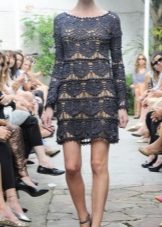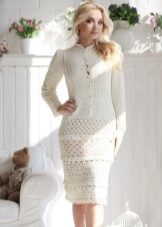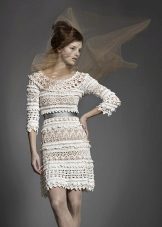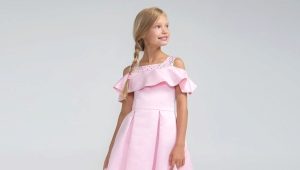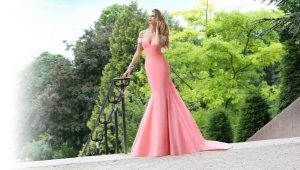vintage dresses
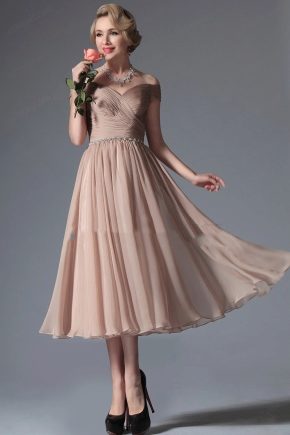
Vintage can be called items of clothing that were fashionable in the last century. Since fashion is cyclical, the demand for outfits slightly forgotten over the century begins to periodically remind of itself. This season, you can safely take out your grandmother's and great-grandmother's feminine outfits from the old chests. What for? At the peak of popularity are vintage dresses that can favorably emphasize the beauty of the silhouette of a modern woman.
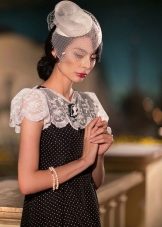

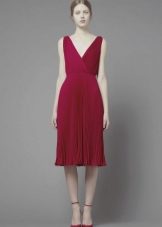

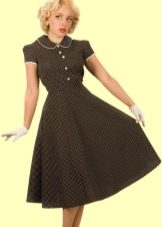
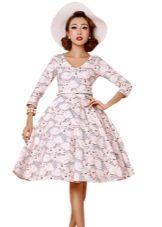
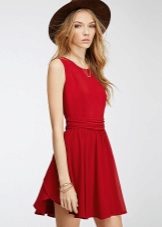

What is vintage style
The concept of “vintage style in clothes” appeared only in the 90s, when fashionistas began to actively wear things made in the 60s and 70s. It is interesting that at that time only outfits that were created starting from the 40s fell under this concept. In modern times, it is customary to call vintage clothes that were sewn in the 20-80s of the last century, but not earlier and not later. But this does not mean that designers have to rummage through old wardrobes to find the right model for their collections. Today there are several options for vintage:
- Classic vintage - real designer clothes that were worn in the last century, but no later than the 80s of the last century.
- Stylized vintage - clothing in the style of the last century, which was intentionally aged, but was already created in the modern period.
- neovintage - clothes that are intentionally aged, giving the features of the style of the last century, but it can be created at any time.
- Vintage combined - clothes created by modern designers in a modern style, but already decorated with vintage elements - old buttons, brooches, and so on.

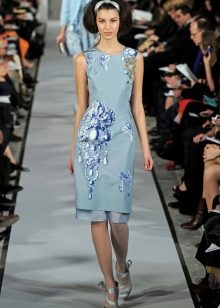
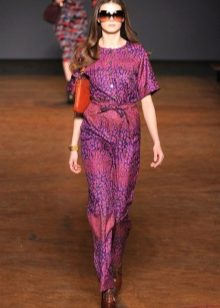

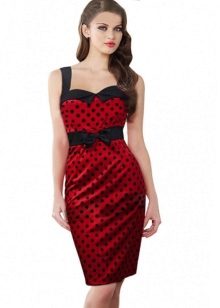
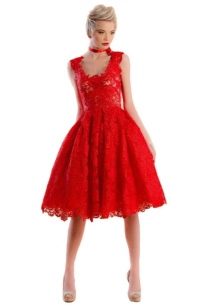
Modern designers are so resourceful that they manage to sew completely new and modern things from old fabrics. Finding them now is not so easy, but if you can, then the collections are an extraordinary success, receiving high praise from both critics and current fashionistas.

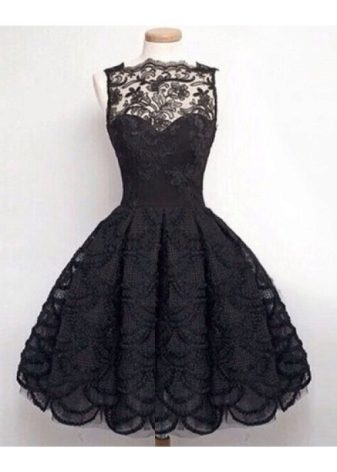
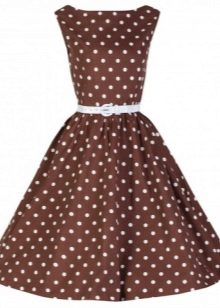

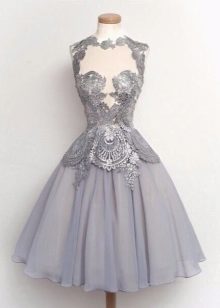
Popular Models
But if we are talking about popular models of dresses, then their features have changed over the decades. The style and preferences of the then young ladies were influenced by the stars of the movie screen, the standard of living and the general political situation. Consider the fashion features that have already become vintage in more detail.


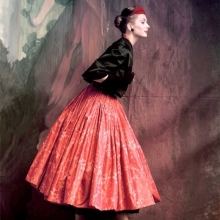
20s - 30s
During this period, the girls strove to resemble the famous Hollywood actresses, one of whom was Marlene Dietrich. On weekdays, they wore cropped dresses like a tunic, which they complemented with a stylish belt. They were sewn mainly from knitwear. Festive and evening dresses were made of velvet, silk and were an elongated robe with a straight or slightly flared cut, which effectively exposed part of the ankles. The sleeves were long or missing, and the neckline was closed.

In those days, girls were distinguished by their slenderness and even noticeable thinness, so young ladies who want to wear such a dress these days are better off with a similar type of figure.

40s
The image of girls during this period was influenced by the terrible events of World War II.It was a period of great change, which erased the sophisticated and seductive lines from the girls' dresses. The outfits became strict, to some extent even rough and looked more like military uniforms. But in some models of outfits, notes of femininity were still traced. For a casual look, they preferred to choose dresses with flared mid-calf skirts, and for an evening look they chose strapless dresses.
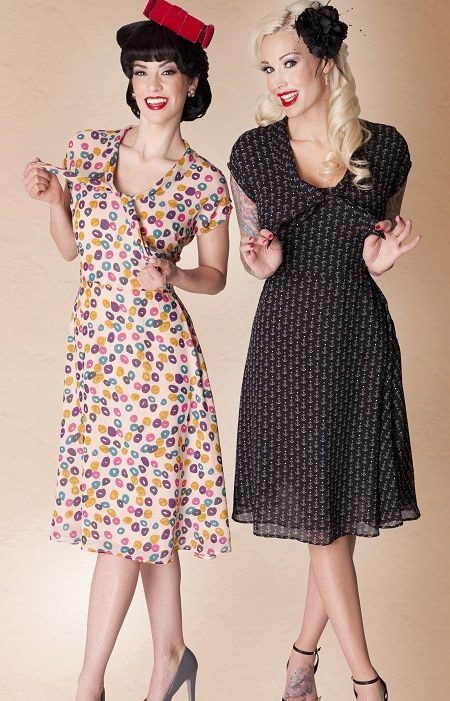
During this period, the girls were also distinguished by thinness, so modern girls who prefer to wear dresses in the style of the 40s are better off with an enviable hourglass silhouette.
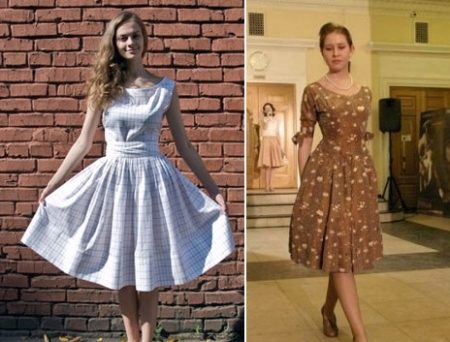
50s
By this time, people had already begun to gradually recover from the horrors of war, and outfits emphasizing the sexuality and brightness of a woman were in special honor. Lush and multi-layered skirts of dresses reached the knee, and the waist was necessarily tied up with a wide satin ribbon, making the silhouette even more refined. Dresses during this period were distinguished by an interesting neckline. She was not too open, but created a certain mystery. The sleeves, if any, were small, more preference was given to straps.

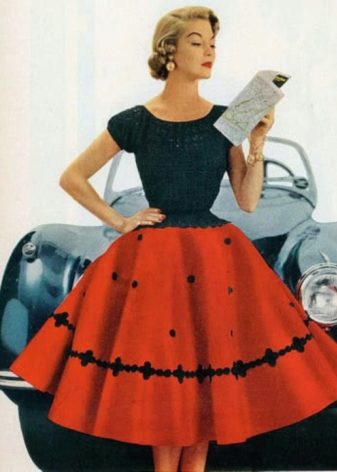
A dress in this style is suitable for young ladies with any type of figure, but it is worth considering that a girl who wants to wear it must have confidence and be relaxed. Slender legs, thin waist and lush chest will be an additional advantage.

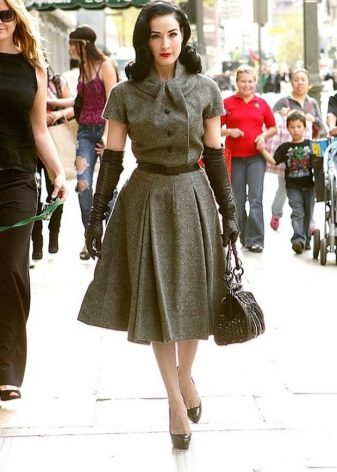
60s
During this period, fashion society sought to stand out from the crowd. The hippie style was held in high esteem - free and bright. Dresses of those years were distinguished by a trapezoidal cut and knee length. The skirt often had a pleated look, and was sometimes made layered.The neckline could be closed or have a V-shape, but the sleeves were shortened, and sometimes absent altogether, since straps were more preferred.

From that moment on, the figures of the girls did not have mass uniformity. That is why any modern person can find a suitable dress model in this style for themselves.
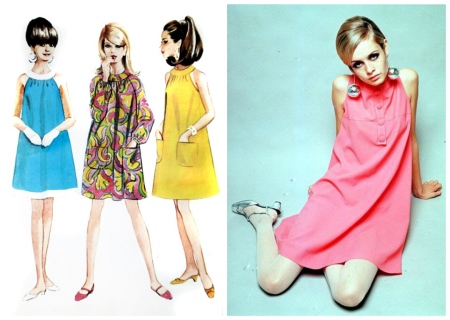
70s
During this period, disco style reigned in fashionable society. The brightness of shades and variety of patterns have become fashionable as never before. After a long and unjustified oblivion, the maxi length has again become trendy. Midi and mini dresses were also present in a huge assortment. The cut became straight and was distinguished by decorative simplicity, but dresses with a flared skirt could also be found.
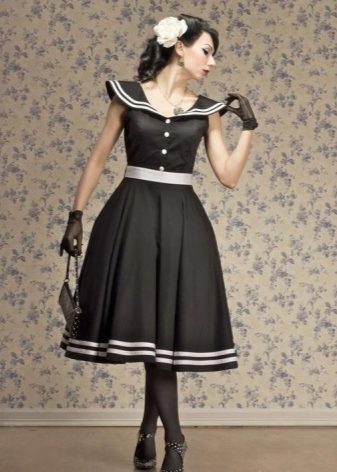

In dresses in the style of the 70s, any girl can look bright. Models of that time are diverse and more and more begin to resemble modern ones. We owe the fashion for high waists and boyish silhouette dresses to this period.

80s
During this period, the silhouette of the “hourglass” became truly ideal, so the designers actively sought to give absolutely all the girls such a shape with the help of dresses. Particular attention was paid to the lines of the shoulders, waist and hips. Corrective elements of drapery, ruffles, frills and shoulder pads came into fashion, and the cut took on more and more seductive forms. Dresses in the style of the 80s can be found even in modern collections, and absolutely all young ladies, without exception, can choose the right model.
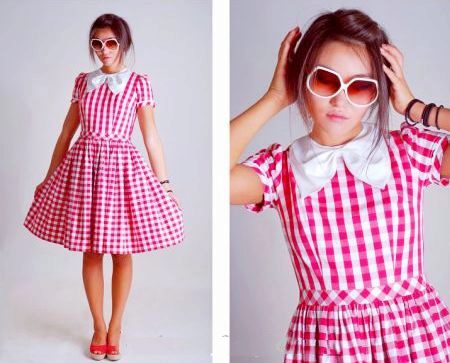
Colors and prints
Fashion for shades and patterns of dresses changed as spontaneously as for styles: In the 20s, ladies preferred to walk in dresses in pastel colors, as well as classic shades - blue and white. The floral print was considered especially popular.In the 30s, patterns in the form of stripes, cages, peas and flowers became trendy. In the everyday look, preference began to be given to white, and in the evening - gold and silver.


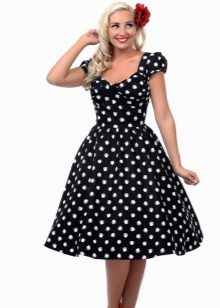
Since the 40s, laconic vertical stripes, geometric patterns and furs have come into fashion. Women began to wear dresses of strict and restrained shades - dark green, gray, cream and burgundy. At the age of 50, checkered, zigzag and floral prints became in demand again, and preference, in most cases, was given to white.
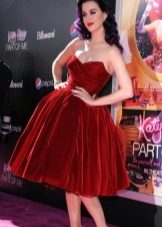

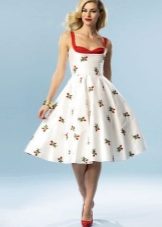

In the 60s - 70s, they began to bring much more brightness and color to the image of girls. Not only floral, but also animal prints have become fashionable. Leopard was considered especially trendy. Among the popular shades are lemon, blue, brown, and purple.
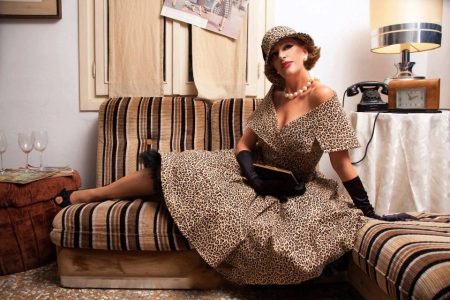
In the 80s, yellow shades became the most trendy, as well as lime, pink and green. Fashion for prints has remained the same. But there are shades that were relevant in all the above times and remain so to this day.

Black
A classic color that has always been especially loved by women. This color gave charm and sophistication to the evening look and created a strict and concise look in everyday life. Any patterns and decorative elements looked favorably on a dress of this color, whether it was rhinestones, beads or feathers. Under it, it was not necessary to select other elements of the wardrobe for a long time - classic shoes, a cape or a boa, and the image is ready.
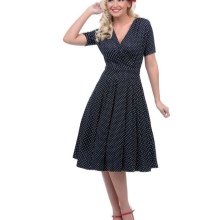
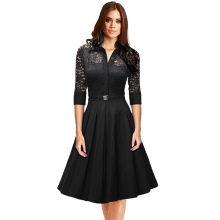
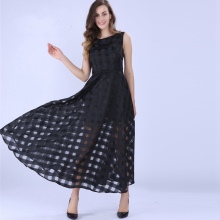
Red
A fatal color that has many shades, each of which took place at one time or another. In the turbulent 20s and 30s, preference was given to an appetizing cherry shade, in the military 40s - burgundy, and in the post-war 50s - Titian.In the 60s - 80s, they began to give preference to brighter shades of red - scarlet, raspberry, carrot, red-orange.
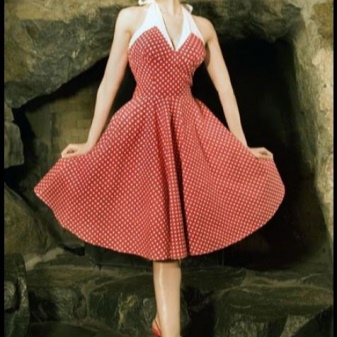


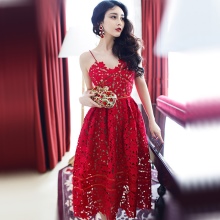

Length
But the attitude to the length of the designers and fashionistas has always been ambiguous. In the 20s, light mid-calf dresses came into fashion, and they were worn both in an evening look and in everyday wear. The same length was popular in the military 40s, but the dresses were strict and more like men's uniforms. This length remained fashionable in the 50s, but the outfits were already brighter, and their skirts were very flared. With the beginning of the 60s, midi outfits were forgotten a little and they returned to fashion only in the 80s, and even then in office style.
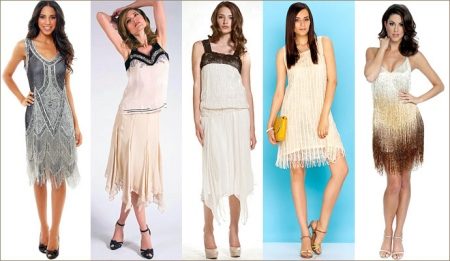
Long
This dress came into fashion in the 30s. Then it reached the ankles, and a small ruffle was sewn to the bottom of the bar, forming a kind of “fish” silhouette. Sometimes such dresses had a small train, but they were worn exclusively in an evening look. In the daytime, lighter, flowing styles were preferred.

A short
Such dresses became a real breakthrough, a fashion revolution that took place in the 60s. Miniskirt dresses barely reached the middle of the thigh, but were considered unusually fashionable and beautiful. They were worn by absolutely everyone and it’s good that they are appetizing, but the correct forms of the silhouette, the girls were allowed to do this. Regarding the cut of dresses, in most cases it had trapezoid shapes.


up to the knee
In the 70s, the world had already slightly moved away from the hype of miniskirts. Girls began to choose more discreet knee-length outfits. Dresses had a straight silhouette, sometimes they were flared. The skirts were slightly pleated, but could also be straight. In the 80s, young women of fashion allowed themselves to wear the same pleated skirts, but shorter in length.
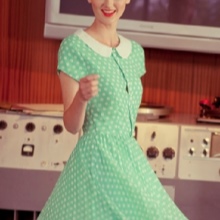
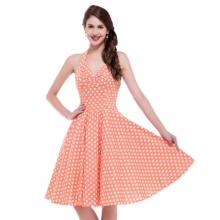
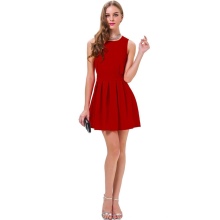
Fabrics and textures
For sewing women's outfits at different times, different fabrics were used. In the 20s, flowing silk and chiffon dresses were considered especially popular. In the 30s, coarser taffeta, as well as light cotton, took the palm. In the military 40s, crepe became the most popular, and in the late 50s, dresses began to be sewn from satin fabric, adding a silk lining. There were also unique dresses made of tulle and organza.


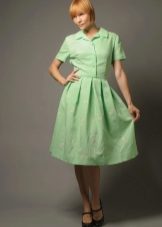

By the beginning of the 60s, light silk and satin dresses began to be decorated with sequins and beads. In the 70s, dresses in most cases became cotton and knitted. They were decorated with drapery elements, ruffles and an abundance of sparkles. In the 80s, denim came into fashion, as well as synthetics, leather and stretch texture. But there is a kind of dress that has been popular at all times.

Lacy
Such a dress always makes a girl feminine. Regardless of the style and length, it gives tenderness and romanticism to the image. Lace dresses have been popular at all times. If any other, light fabrics were used as the basis for tailoring, then only a separate element of the dress could be decorated with lace. The translucent texture of the material made it possible to make the image more mysterious.
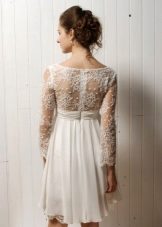
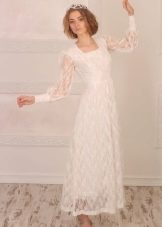


With what and how to wear
When composing the perfect vintage combination with a dress, you should definitely focus on the fashion features of the period in which it was relevant. In the earlier, 20-50s, it was fashionable to complement the image with hats, wear pumps, and use pearl beads, furs, feathers, lacquer belts and velvet handbags as decorations.



In the 60s and 70s, shoes with cork soles and high heels became fashionable. Scarves were used as headdresses, and large glasses were used as accessories. In the 80s, fashion became more diverse.Ankle boots, sandals, sneakers, ballet shoes, high boots were considered popular shoes. Plastic jewelry was considered the best decoration. They preferred to wear handbags bright, with sequins, rhinestones, and unusual patches in the form of appliqués.

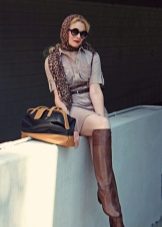

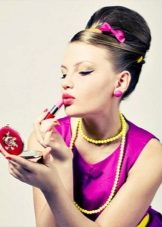
Models by Vanessa Montoro
Vanessa Montoro is a famous brand that offers the world spectacular knitted dresses in vintage style. The designer uses high-quality silk yarn in her works, and the knitting technique is so unusual and versatile that any modern girl will like it.

